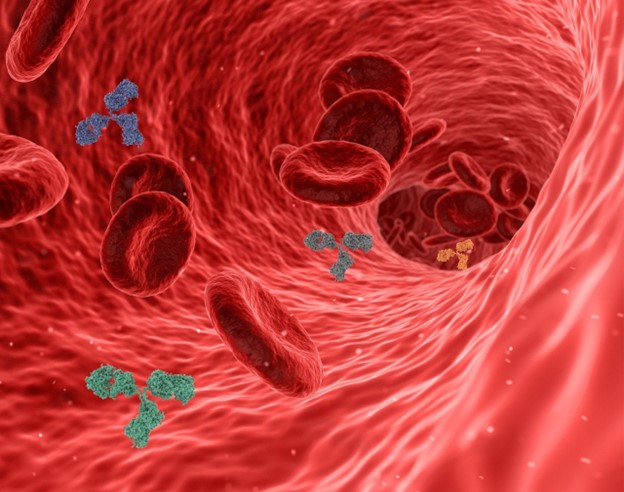All licensed COVID-19 antibody treatments become ineffective over time as new mutants emerge. We isolated antibodies from an individual who recovered from SARS-1 and received the COVID vaccine, that work against all COVID-related viruses including the latest Omicron variants. These broad-targeting antibodies could make future-proof therapeutics to counter the continual evolution of coronaviruses.
Views 1389
Reading time 3.5 min
published on Jan 31, 2024
In late 2019, a novel coronavirus approximately 80% similar to the virus that caused the Severe Acute Respiratory Syndrome (SARS) in 2003 was first reported in China. This virus designated as SARS-2 (the COVID-19 virus) later swept through the globe, causing millions of infections and deaths, greatly disrupted lives and economies as countries strive to protect their citizens by limiting the spread of infection and rapidly developed diagnostics, therapeutics and vaccines. Despite these global efforts, SARS-2 continues to circulate widely in the population more than three years after the pandemic was first announced. The virus started to mutate rapidly when vaccines and therapeutics (i.e. small molecules and monoclonal antibodies) were rolled out to manage the pandemic, and the viral mutants that had higher transmissibility and were able to evade population immunity conferred by vaccination and infection became new circulating strains. All the monoclonal antibodies that are licensed to treat severe COVID-19 disease thus became ineffective after some time due to the constant renewal of resistant circulating variants in the population.
Antibodies are one of our body’s key defences to external insults (e.g. infection by bacteria and viruses). People who have been infected by the SARS-2 virus during the early pandemic period were recruited by researchers to learn more about this novel virus and these participants would have naturally made antibodies that helped them to recover from the COVID-19 disease. Antibodies made by the body are a mixture of strong and weak clones (polyclonal), and by isolating these antibodies into their single clones, strong monoclonal antibodies against SARS-2 can be identified.
In this study, we recognized the high similarity of the SARS-1 virus that caused a small outbreak in a few countries in 2003, and the SARS-2 virus that caused the pandemic in 2019. Thus we asked the question: “Could we find monoclonal antibodies that have potent activity against both SARS-1 and SARS-2, that potentially also cross react to the broader SARS-related virus family called sarbecoviruses found in animal hosts that may have the possibility to jump hosts to humans in the future?” If such antibodies can be discovered, then we can be ahead of the SARS-2 virus as these antibodies are likely to be effective on new mutants. More importantly, we can also be prepared for the next outbreak caused by sarbecoviruses by readying these antibodies for treatment of infected people, or for pre-emptively treating people who have had close contact with infected people, to break the infection cycle.
To achieve our goal of finding highly potent monoclonal antibodies that work against all sarbecoviruses, we started from a special cohort of participants who recovered from SARS-1 in 2003 and received vaccinations against SARS-2 in 2021. Our hypothesis is that people who have experienced two or more strains of fairly different sarbecoviruses will make antibodies that react against common patches of the viruses. As the common patches of the viruses are important for virus viability, they are shared amongst many family members. On the other hand, different patches between the different family members give each virus their uniqueness and we wanted to avoid that as much as possible, otherwise we might experience the same issues of existing monoclonal antibodies, whereby it worked well against the current strain of SARS-2 but lost activity against new viral evolutions. Our findings support our hypothesis. We were able to identify a lot of monoclonal antibodies that cross react to both SARS-1 and SARS-2 viruses. In addition, our best antibody E7 also neutralizes multiple animal sarbecoviruses (i.e. RaTG13, GX-P5L and WIV-1) and newly emerged SARS-2 variants (currently tested until Omicron EG.5.1 subvariant). E7 reacts to two distinct patches on the SARS-2 virus, prevents binding of SARS-2 virus to its target cell receptor and subsequent entry of the virus into the cell. As E7 is able to neutralize so many members of the sarbecovirus family, it may be safe to extrapolate that the virus patches E7 bind to are highly conserved between many members of the sarbecovirus family so E7 will continue to work against new viral emergents.
Our strategy to target shared important patches of the sarbecovirus family has additional implications beyond the identification of pan-sarbecovirus neutralizing monoclonal antibodies. With the majority of the world’s population vaccinated against SARS-2, we should consider the development of SARS-1 and/or animal sarbecoviruses vaccines as booster vaccines, rather than waiting for the next variant-of-concern before updating our SARS-2 vaccines. By doing so, we could broaden our immunity against sarbecoviruses and reduce our susceptibility to constant waves of SARS-2 infection in the future.
Original Article:
Chia, W. N., Tan, C. W., Tan, A. W. K., Young, B., Starr, T. N., Lopez, E., Fibriansah, G., Barr, J., Cheng, S., Yeoh, A. Y.-Y., Yap, W. C., Lim, B. L., Ng, T.-S., Sia, W. R., Zhu, F., Chen, S., Zhang, J., Kwek, M. S. S., Greaney, A. J., … Wang, L.-F. (2023). Potent pan huACE2-dependent sarbecovirus neutralizing monoclonal antibodies isolated from a BNT162b2-vaccinated SARS survivor. Science Advances, 9(30). https://doi.org/10.1126/sciadv.ade3470
 Microbiology
Microbiology



